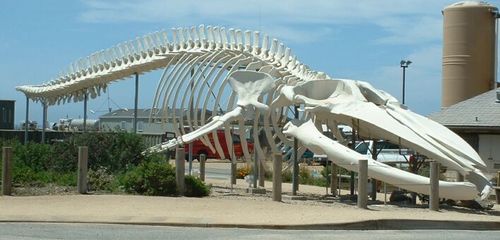 Among the distinguishing features of the countless living creatures on our planet, size is certainly one of the most noticeable. Life on earth encompasses everything from microscopic one-celled bacteria to the gargantuan blue whale, the largest animal to have ever lived at a size of up to 30 meters and a weight of 120 tons. Even among species, size can fluctuate noticeably. What accounts for these differences in size? In her article “The Long and Short of It”, evolutionary biologist Olivia Judson looks at some of the factors that influence the size of creatures both great and small.
Among the distinguishing features of the countless living creatures on our planet, size is certainly one of the most noticeable. Life on earth encompasses everything from microscopic one-celled bacteria to the gargantuan blue whale, the largest animal to have ever lived at a size of up to 30 meters and a weight of 120 tons. Even among species, size can fluctuate noticeably. What accounts for these differences in size? In her article “The Long and Short of It”, evolutionary biologist Olivia Judson looks at some of the factors that influence the size of creatures both great and small.
Competitive mating can account for the large size of some animals. As one would imagine, bigger animals are more likely to win a fight. Thus, thanks to sexual selection, in species where males fight for females, evolution favors larger males. Southern elephant seals, Judson points out, fight for control of beaches where females come ashore during mating season. If a male can fight off all rivals, he can mate with all the females on the beach, passing on his genes to future generations of seals. It’s little surprise, then, that among southern elephant seals, males have evolved to be six times heavier than females. Natural selection can also account for the increased size of females in other species, where a larger female is more likely to produce more and healthier offspring.
Yet Judson points to several factors that can push size the other way. Larger animals, for example, require more food, are more prone to overheating, and take longer to mature. In the presence of environmental pressures such as extreme heat and scarcity of food, the small — not the large — are more likely to survive.
However, while we can find numerous evolutionary causes for animal size, Judson highlights a mystery that still perplexes biologists: how an organisms “knows” what size to become. She points to a study of salamanders that found the creature’s size seems fixed regardless of the size of their individual cells. In the experiment, scientists were able to double the size of cells in salamanders. Yet, rather than produce an animal that was twice as big, the scientists discovered that these salamanders grew to the exact same size, only they now contained half as many cells as before.
Recent breakthroughs in genetics have located several genes that affect the size of creatures, but the mystery is far from solved. For now, it seems, we can tell why an animal grows to a certain size. We just can’t tell how it knows to stop there.

